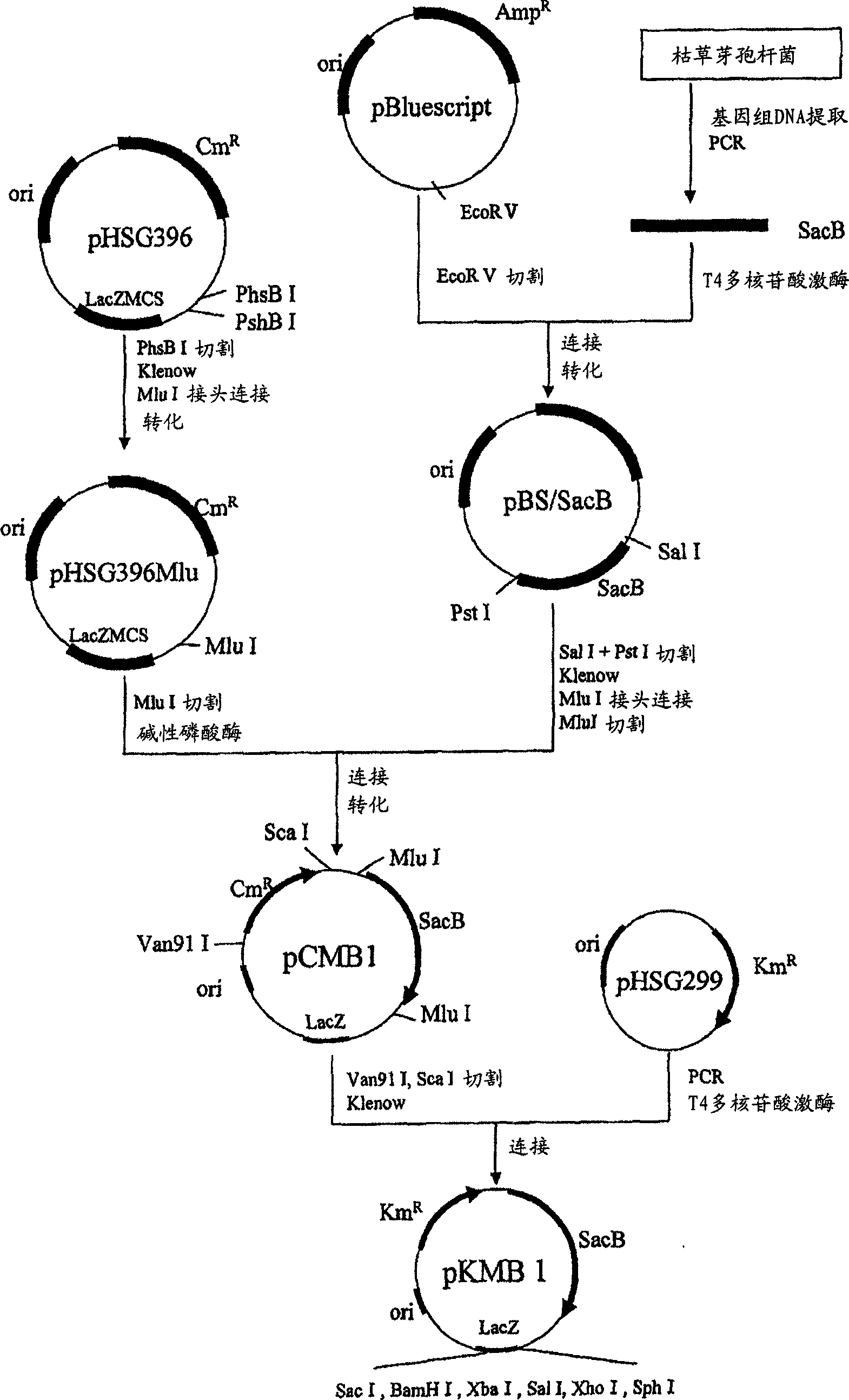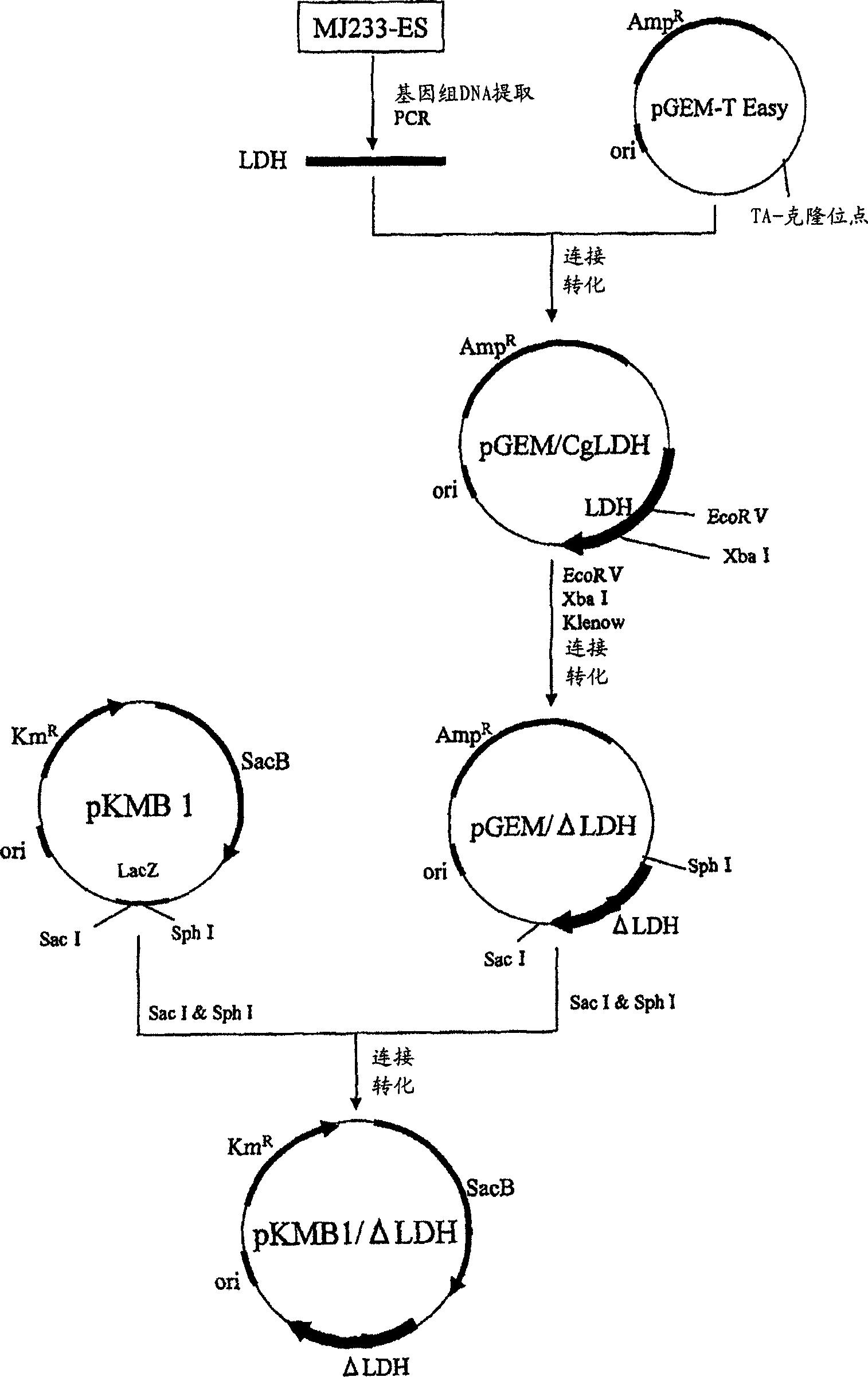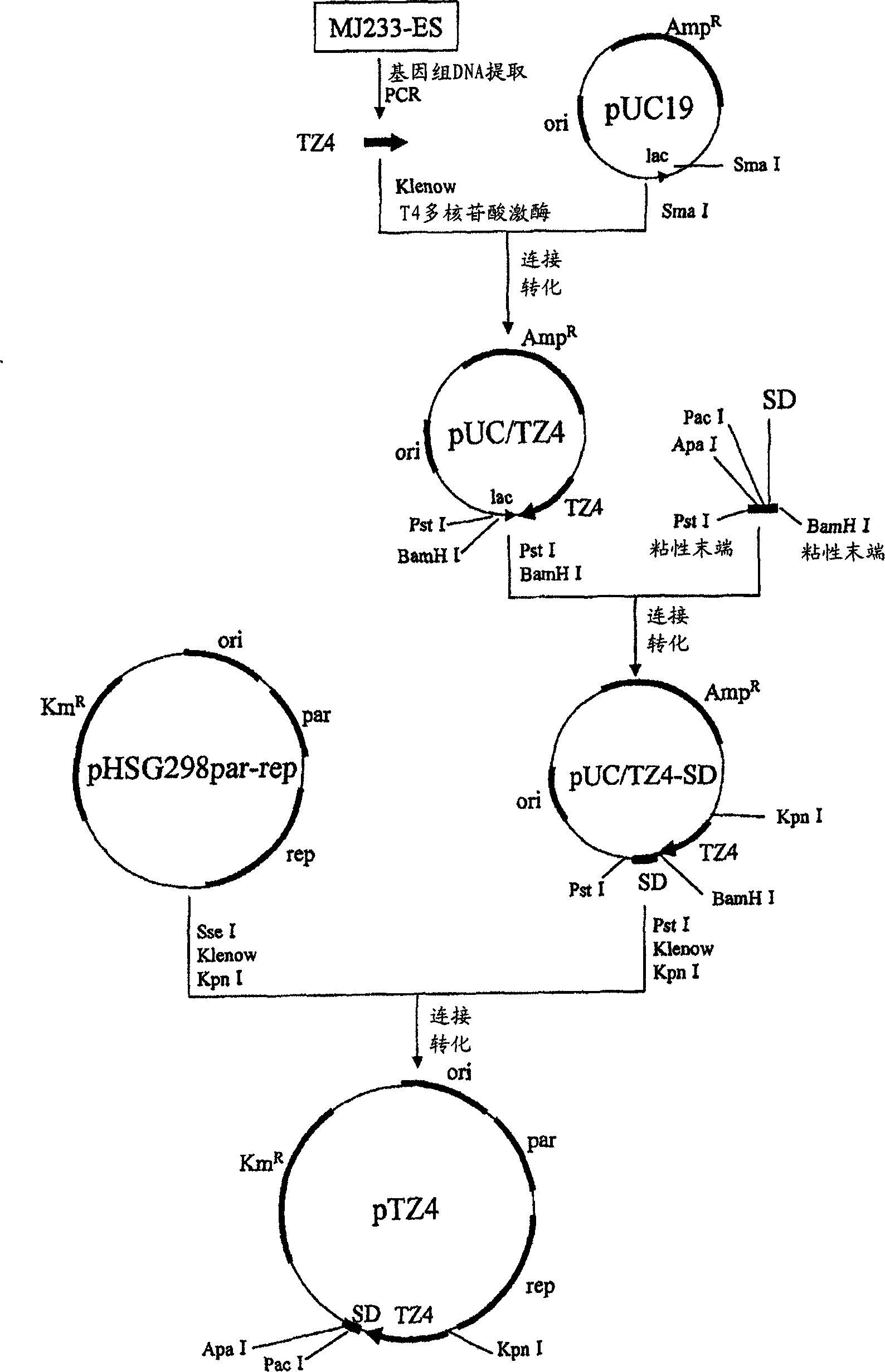Method for producing succinic acid
一种琥珀酸、延胡索酸的技术,应用在重组DNA技术、细菌、发酵等方向
- Summary
- Abstract
- Description
- Claims
- Application Information
AI Technical Summary
Problems solved by technology
Method used
Image
Examples
Embodiment 1
[0079] Construction of gene disruption vectors
[0080] (A) Extraction of Bacillus subtilis genomic DNA
[0081] Bacillus subtilis ISW1214 was cultured in 10 mL of LB medium [composition: 10 g of tryptone (tryptone), 5 g of yeast extract and 5 g of NaCl dissolved in 1 L of distilled water] until the late logarithmic growth phase (late logarithmic growth phase), and collected the bacterial cells described above. The obtained bacterial cells were resuspended in 0.15 mL of 10 mM NaCl / 20 mM Tris buffer (pH 8.0) / 1 mM EDTA·2Na containing 10 mg / mL lysozyme.
[0082] Then, proteinase K was added to the suspension at a final concentration of 100 μg / mL and kept at 37° C. for 1 hour. Then, sodium lauryl sulfate solution was added at a final concentration of 0.5%, and kept at 50° C. for 6 hours for lysis. To this lysate, an equal amount of phenol / chloroform solution was added and shaken slowly at room temperature for 10 minutes. Then, the total suspension was centrifuged (5,000×g, 20 ...
Embodiment 2
[0102] Construction of LDH gene-disrupted strains
[0103] (A) Genomic DNA extracted from Brevibacterium flavum MJ233-ES strain
[0104] In 10mL LA medium (2g urea, 7g (NH 4 ) 2 SO 4 , 0.5g KH 2 PO 4 , 0.5g K 2 HPO 4 , 0.5g MgSO 4 ·7H 2 O, 6mg FeSO 4 ·7H 2 O, 6mg MnSO 4 ·4-5H 2 Brevibacterium flavum MJ-233 strain was cultivated in O, 200 μg biotin, 100 μg thiamine, 1 g yeast extract, 1 g casamino acid (casamino aid) and 20 g glucose dissolved in 1 L distilled water until late logarithmic growth. The resulting bacterial cells were used to prepare genomic DNA by the method described in Example 1, part (A).
[0105] (B) Cloning of lactate dehydrogenase gene
[0106] Lactic acid of the MJ233 strain was obtained by performing PCR using the DNA prepared in the preceding part (A) as a template; and using DNA ((SEQ ID NOs: 5 and 6) synthesized based on the nucleotide sequence design of the gene described in JP11-206385A Dehydrogenase gene. The composition of the reactio...
Embodiment 3
[0129] Bacterial expression vectors for construction of coryneform bacteria
[0130] (A) Promoter fragment of bacteria producing coryneform bacteria
[0131] A DNA fragment of SEQ ID NO: 4 shown in JP07-95891A and reported to have high promoter activity in coryneform bacteria (hereinafter, referred to as TZ4 promoter) was used. By using Brevibacterium flavum MJ233 genomic DNA prepared in part (A) of Example 2 as a template; and using DNAs (SEQ ID NOs: 9 and 10) synthesized based on the sequence design described in SEQ ID NO: 4 in JP07-95891A As a primer, the promoter fragment can be obtained by performing PCR.
[0132] The composition of the reaction solution is as follows: 1 μL template DNA, 0.2 μL PfxDNA polymerase (available from Invitrogen Japan K.K.), 1-fold concentration of the supplied buffer, 0.3 μM corresponding primers, 1 mM MgSO 4 and 0.25 μM dNTPs were mixed, and the total volume of the reaction solution was adjusted to 20 μL.
[0133] The reaction temperature c...
PUM
 Login to View More
Login to View More Abstract
Description
Claims
Application Information
 Login to View More
Login to View More - R&D
- Intellectual Property
- Life Sciences
- Materials
- Tech Scout
- Unparalleled Data Quality
- Higher Quality Content
- 60% Fewer Hallucinations
Browse by: Latest US Patents, China's latest patents, Technical Efficacy Thesaurus, Application Domain, Technology Topic, Popular Technical Reports.
© 2025 PatSnap. All rights reserved.Legal|Privacy policy|Modern Slavery Act Transparency Statement|Sitemap|About US| Contact US: help@patsnap.com



